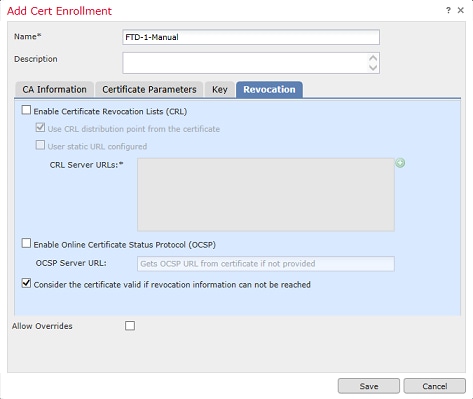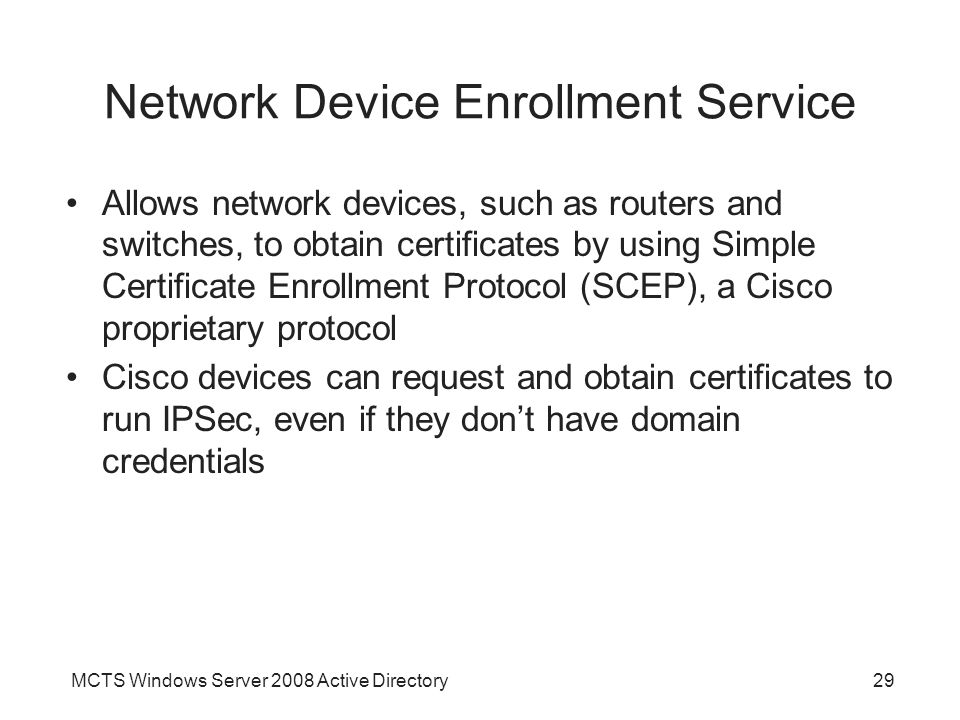Enrollment is the process to obtain a certificate. The two process of enrollment are manual enrollment and a network SCEP-based enrollment. Network-based SCEP is discussed later in this chapter. Simple Certificate Enrollment Protocol (SCEP) is an IETF draft, draft-nourse-scep-20. % Start certificate enrollment.% The subject name in the certificate will include: CN=Spoke.cisco.com,OU=TAC% The subject name in the certificate will include: Spoke895.cisco.com% Certificate request sent to Certificate Authority% The 'show crypto ca certificate cisco verbose' commandwill show the fingerprint.

Certificate Expiration and Renewal
Certificates have a fixed lifetime. Eventually, both the root's certificate and the spoke's certificate expire. When a certificate expires, widespread connectivity issues might result so that in large scale VPN solutions, authentication in IKE would fail and connectivity could not be established. To prevent this type of failure, two mechanisms should be deployed for certificate renewal: auto-enrollment and rollover for end spokes and servers.
Auto-Enrollment

When a certificate on an end device is going to expire, auto-enrollment obtains a new certificate without disruption. By configuring auto-enrollment, the end host can request a new certificate at X time before its local certificate expires. This feature is used with SCEP, and together this provides an automated mechanism for enrollment requests prior to end node certificate expiration.
In Example 3-8, a spoke is configured to request a new certificate at 50 percent of the life time expiration, or 15 minutes into its assigned 30-minute lifetime. In the show crypto pki certificate output, notice the renew date is exactly 50 percent between the start date and end date (15 minutes).
Example 3-8. Auto-Enrollment Example with show Command
The certificate authority has the option to grant requests manually or use grant auto, which is a feature that automatically grants certificate requests. This raises a classic problem in network security: availability versus security. Using grant auto makes the entire granting process more highly available and easier. However, grant auto on the CA makes it easy for any device to request and get a certificate.
Grant auto should be used with great care. Some circumstances where it might be all right are in closed systems, such as staging areas. Another situation would be in which policy controls are in place, such as a firewall, which enables only specific end hosts to access the CA, and only during windows when auto-enrollment requests occur. Also, the feature grant auto trustpoint xxx will only auto-grant requests signed by trustpoint xxx. Normally, xxx is the server trustpoint. Renewal requests are signed by the existing certificate. In that way, only renewal requests from clients with a valid certificate from your CA will be auto-granted.
Example 3-9. Grant Auto to Facilitate Auto-Enrollment

Rollover
When a certificate on the CA server is going to expire, rollover enables the root CA to obtain a new certificate without disruption. By configuring rollover, the CA can generate a new certificate at X time before its local certificate expires. The new certificate, which is called the shadow certificate, becomes active at the precise moment the current CA certificate expires.
Notice in Example 3-10, the end date of the current certificate is exactly the same as the start date of the rollover shadow certificate.

Cisco Manual Certificate Enrollment Requirements
Example 3-10. Rollover Example on the Root CA
